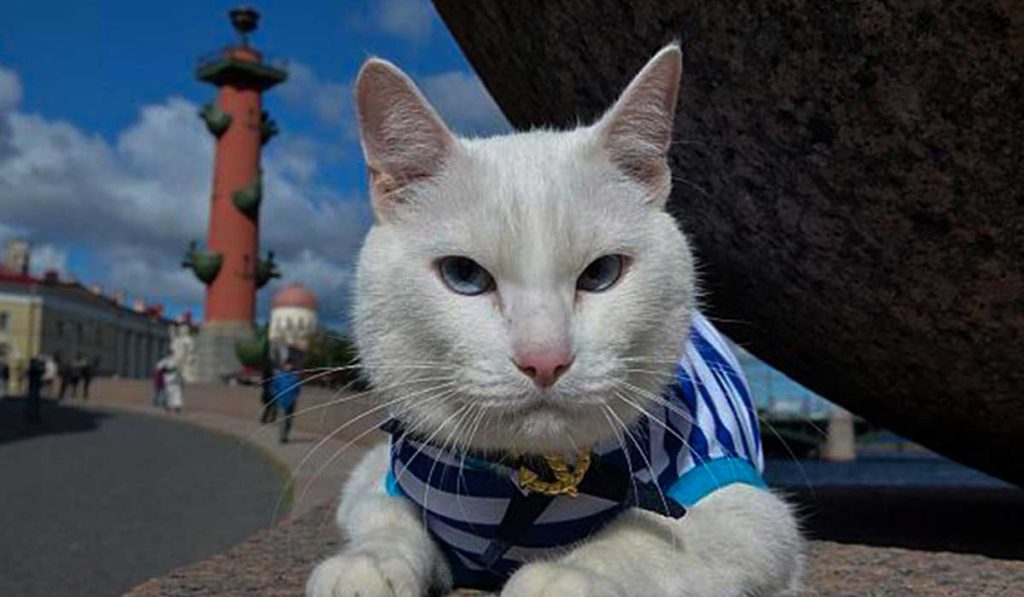There are a large number of respiratory pathologies in cats. The most frequently encountered are coughs and dyspnea and are often caused by allergies, viruses or bacteria. Discover the main respiratory problems that we can meet in our little cats, their origin, their symptoms and the answer to bring to it.

Respiratory pathologies in cats
Asthma
The cat can suffer from asthma as much as us humans. In animals, the disease is due to the absorption of dust, sprays and aerosols, products released into the air or to cigarette smoke.
The affected cat suffers from sudden attacks and more or less strong during which it struggles to breathe. The lack of oxygen makes her open her mouth and her eyes dilate due to anxiety due to the situation. He can also make rattles. When the crisis is strong, the cat’s head folds and its tongue turns blue. When the proper treatment is not given on time, it is possible that the cat dies by suffocation.
- Origin: dust absorption, cigarette smoke, aerosols or irritants.
- Symptoms: breathing difficulties, open mouth in search of air, dilated pupils, dry rales, fold of the head and cyanosis of the tongue.
Bronchitis and bronchiolitis
These pathologies affect what are called the small bronchi at the edge of the lung cavities. The affected cat suffers from a dry cough and very often from respiratory difficulties, although this symptom is not systematic. Of a general nature, the tomcat loses his appetite and is tired, dejected.
- Symptoms: dry cough, breathing difficulties, loss of appetite, depression.
Pulmonary edema
The affected cat suddenly has trouble breathing. He stands prostrate, head bent, looking for air. He can make rattles and a greasy cough. His pupils are dilated and his tongue turns blue. The cat can die quickly of lack of air. Pulmonary edema may be due to heart failure and / or respiratory, infection or intoxication that causes an increase in fluid in the lungs that can lead to death of the animal.
- Origin: respiratory failure, heart failure, intoxication or infection.
- Symptoms: breathing difficulties, dilated pupils, rales and oily cough, cyanotic tongue.
Pharyngitis or laryngitis
These diseases are, as in humans, due to a “cold snap”. The affected cat coughs frequently; it is a dry and strong cough intended to evacuate the irritation of the throat. The cat affected by laryngitis utters small, silent meows because its throat is very irritated and painful.
- Origin: cold air.
- Symptoms: dry and strong cough, mute mews, throat irritation.
Pneumonia
The cat with pneumonia manifests several symptoms. He suffers from more or less strong breathing difficulties that may force him to open his mouth in search of air while standing in a prostrate position, such as the sphinx. His general condition is slowly deteriorating and he loses his appetite and shows a despondency. If the bronchi are irritated, the animal may cough. A runny nose is sometimes noted.
- Symptoms: breathing difficulties, loss of appetite, general fatigue, coughing and runny nose.
Rhinitis
Rhinitis is a disease of viral or allergic origin. The affected cat suffers from a flow of both nostrils, most often associated with conjunctivitis. When rhinitis is of allergic origin, the animal is almost permanently touched and sneezes very frequently. His nasal mucosa is very irritated, bloody mucus can flow from his nose.
Bacterial origin may be suspected when the nasal discharge is purulent and tinged with mucus. A disease or the presence of a foreign body can be assumed when the flow comes from a single nostril and is accompanied by clots of blood.
- Origin: viral or allergic.
- Symptoms: bloody runny nose, conjunctivitis.
Inflammation of the trachea or tracheitis
The cat affected by tracheitis coughs dry and irritating. This type of inflammation tends to spread throughout the respiratory system. The affected cat often suffers in parallel with bronchitis, laryngitis, pharyngitis and / or rhinitis.
- Symptoms: dry cough and sound.
The tumor
The respiratory problems in the cat can be due to a tumor, whether primary or secondary (that is to say due to other tumors that have developed in his body). Depending on the tumor involved, the symptoms are variable, but the animal usually has difficulty breathing. He begins to cough and suffers from a runny nose before losing weight and appetite. A fever is possible.
- Origin: primary tumor or secondary tumor.
- Symptoms: breathing difficulties, weight loss and appetite, cough, runny nose, fever.
What to do in case of respiratory disorders?
If you find that your cat has symptoms of breathing difficulties, do not try to act on your own, as this may make the situation worse. Note the signs and consult your veterinarian urgently. This one will evaluate the general state of the cat then will carry out additional examinations to determine the pathology in question. He alone will then be able to establish a diagnosis and prescribe appropriate treatment, whether surgery or drug treatments.
